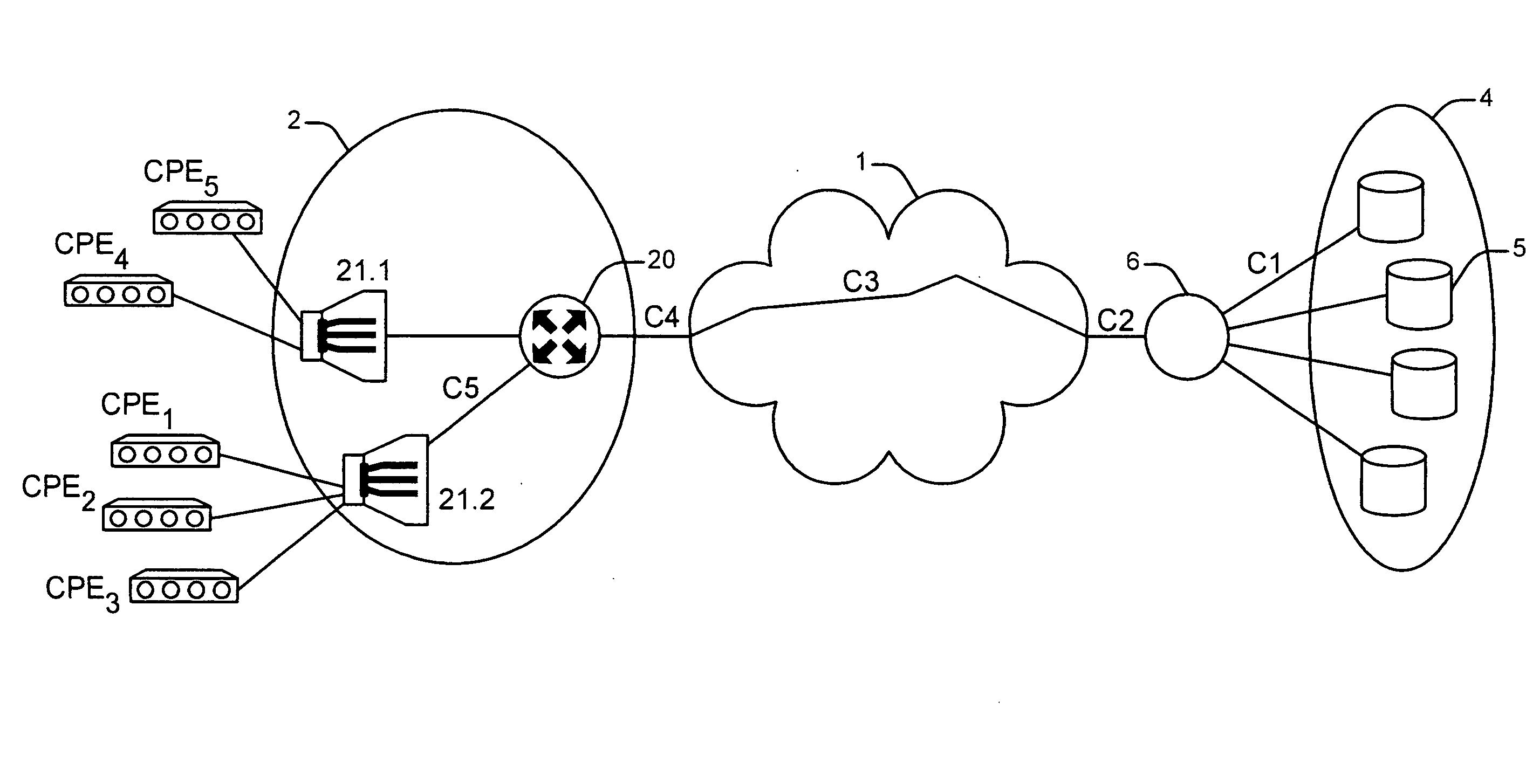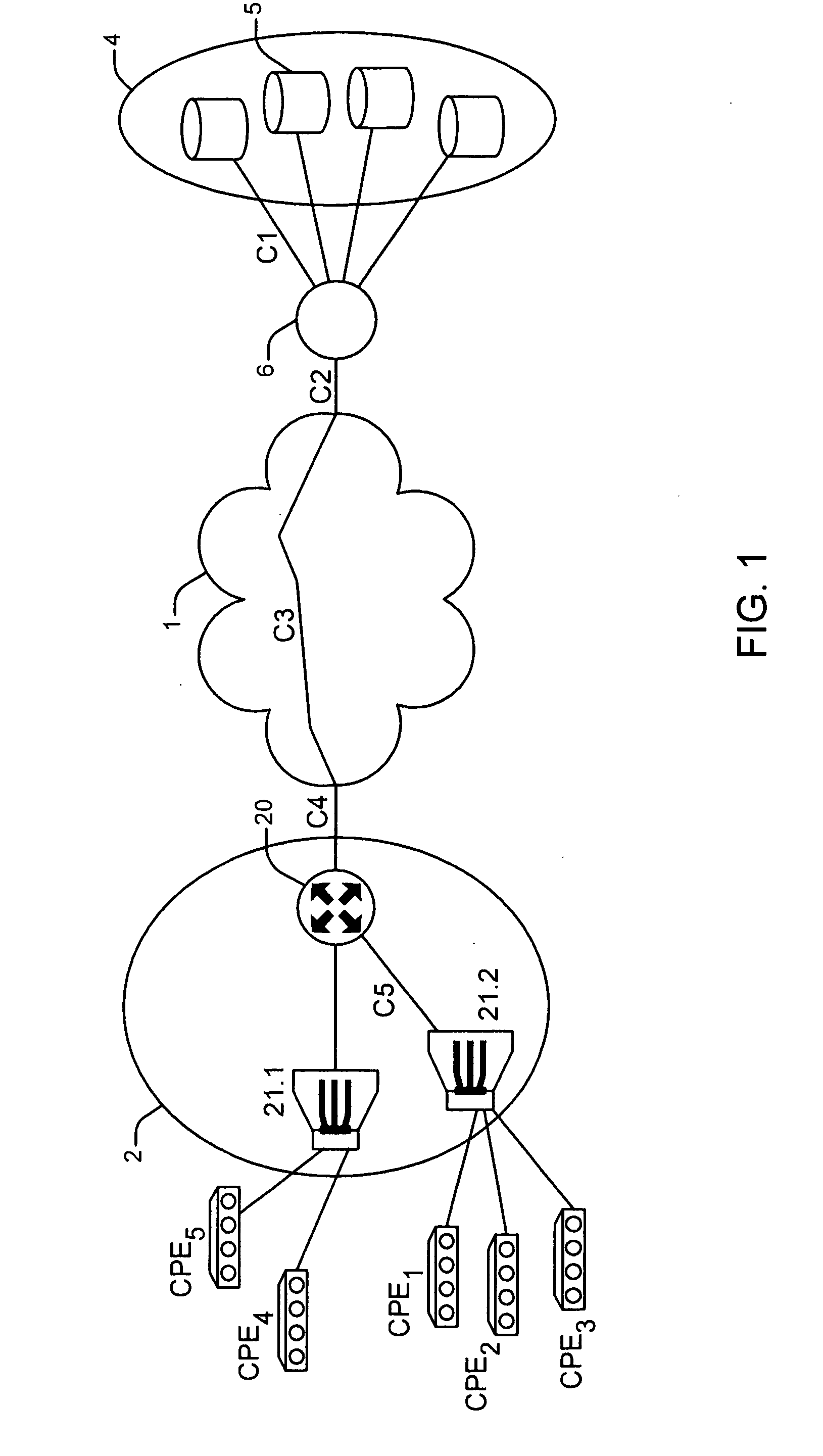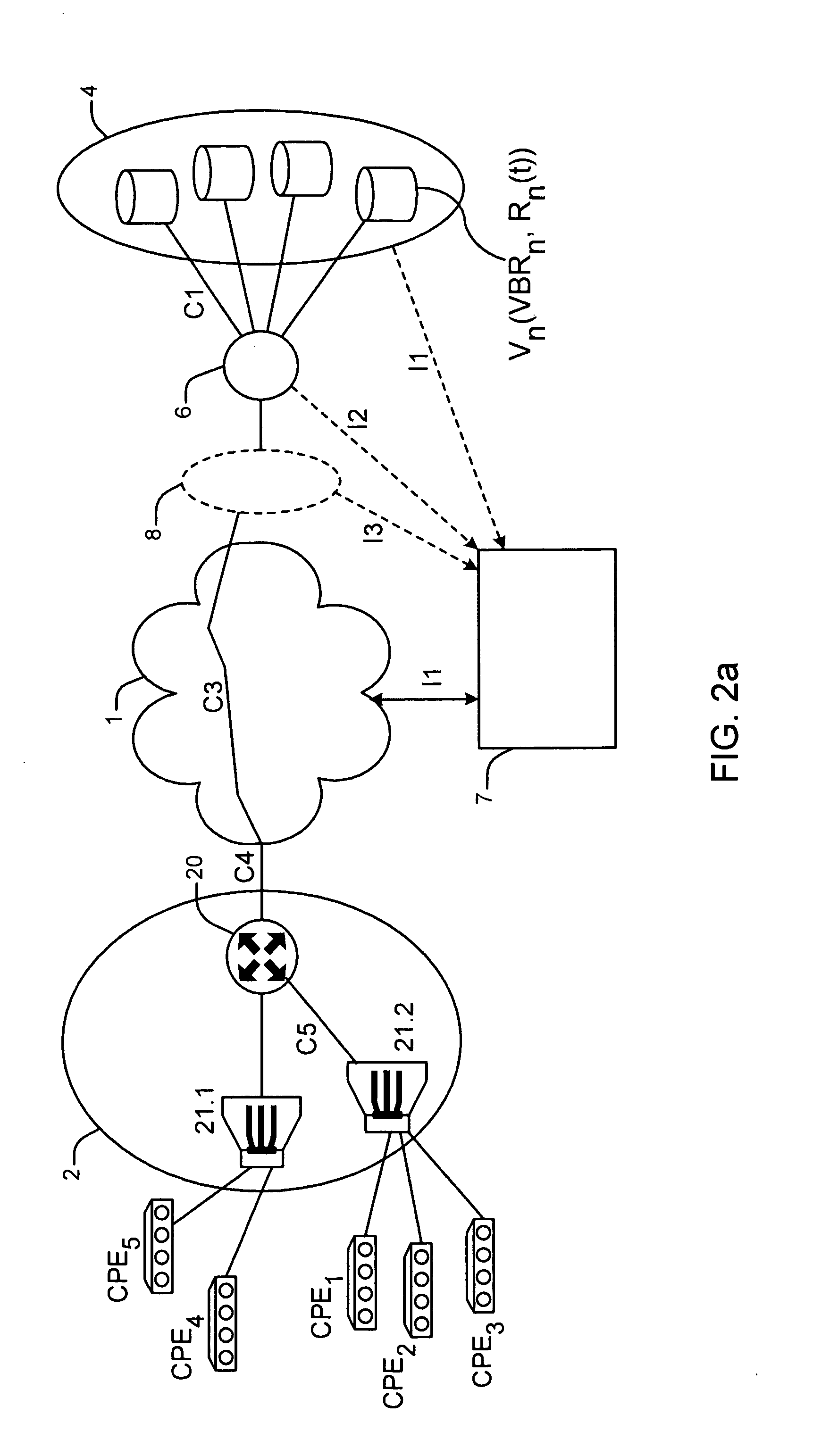Method of managing requests for remote access to multimedia contents
a multimedia content and request technology, applied in the field of managing requests for remote access to multimedia contents, can solve the problems of inability to increase indefinitely, limited number of users which can be served at a given instant, and limited network capacity
- Summary
- Abstract
- Description
- Claims
- Application Information
AI Technical Summary
Benefits of technology
Problems solved by technology
Method used
Image
Examples
Embodiment Construction
[0031] For the sake of clarity, the same references are used for the elements common to the figures. Moreover, hereinafter, the following definitions apply: [0032] requested stream, or new stream, is the stream corresponding to a request for remote access to a given multimedia content. This requested stream can in particular be a new request from a user, or a request to resume reading after a pause, in which case the stream to be considered is the remaining, as yet untransmitted, part of the stream. This can be a stream corresponding to a fast forward or a fast rewind. In all cases, a determined data stream corresponds thereto. For example, for normal reading, the stream corresponds to a transmission of 25 or 30 images per second. For fast forward, the stream corresponds for example to a transmission of 1 image every 12 images. Hereinafter, no distinction is made between these various requests related to reading functionalities offered by the service. [0033] request for remote acces...
PUM
 Login to View More
Login to View More Abstract
Description
Claims
Application Information
 Login to View More
Login to View More - R&D
- Intellectual Property
- Life Sciences
- Materials
- Tech Scout
- Unparalleled Data Quality
- Higher Quality Content
- 60% Fewer Hallucinations
Browse by: Latest US Patents, China's latest patents, Technical Efficacy Thesaurus, Application Domain, Technology Topic, Popular Technical Reports.
© 2025 PatSnap. All rights reserved.Legal|Privacy policy|Modern Slavery Act Transparency Statement|Sitemap|About US| Contact US: help@patsnap.com



